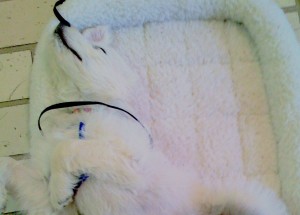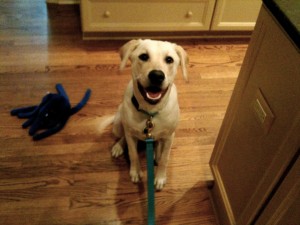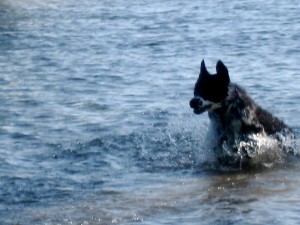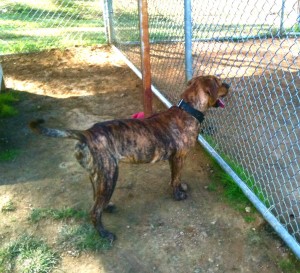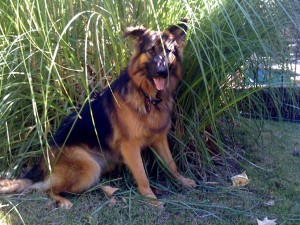 Schedules of reinforcement are consequence sequences or rates for teaching and maintaining behaviors. Different schedules are used at different stages of teaching and maintaining behaviors. There are three schedules of reinforcement.
Schedules of reinforcement are consequence sequences or rates for teaching and maintaining behaviors. Different schedules are used at different stages of teaching and maintaining behaviors. There are three schedules of reinforcement.
- Extinction
- Continuous
- Intermittent
Extinction – when a previously available reinforcer is withheld or no longer available
Some trainers suggest extinction to reduce unwanted behaviors like barking and jumping up. Extinction will reduce the long-term frequency and magnitude of a behavior, but will increase the frequency and magnitude of the behavior in the short-term.
For example: suppose your dog barks when you are talking on the phone. You tell her to ‘shhhh’ or pet her and she does for one moment, but resumes barking in a few moments. Remember, any behavior that is repeated is being reinforced. In this example the touch and ‘shhh’ is reinforcing the barking behavior. To use extinction, you would remove the reinforcers and just ignore the barking.
When you remove the reinforcers that were previously available, your dog will increase her short-term barking efforts to get your attention before she discontinues her long-term ‘barking strategy’. This is called an extinction burst. Your dog will bark at a different pitch or bark louder or add jumping and nipping, or any other behaviors that she considers to be magnifications of the barking behavior. The extinction burst signals that the reinforcers have been successfully removed and your dog will soon abandon her ‘barking while you are on the phone’ strategy, but not before she increases her efforts. If you can survive the short-term increase, you will successfully reduce the ‘barking when you are talking on the phone’ strategy.
Trainers often suggest that clients place ‘jumping up’ behavior on extinction. Dogs jump up for our attention, so the idea is to remove the reinforcer of attention. Just ignore the dog. The problem is that the behaviors during the extinction burst may become dangerous. The dog will jump higher, make more bodily contact, nip, grab clothing or whatever else that dog considers to be in the same response class as jumping up. Suppose the person cannot survive the behaviors during the extinction burst, so the person ‘gives in’ and gives the dog attention. Now the dog has learned that in order to get the person’s attention, she must jump hard, jump high, grab clothes and nip! How rude! It is not advisable to place ‘jumping up’ on extinction if your dog is large enough to knock you over!
In addition to the extinction burst, there is another problem with using extinction to reduce unwanted behaviors. Your dog may very well give up on her barking strategy and replace it with something worse, such as destroy your furniture, counter surf, jump on your table, chase your cat, nip at your child, et cetera. It is much more efficient to teach a polite behavior that is incompatible with the unwanted behavior!
Behaviors that are reduced through extinction are subject to spontaneous recovery. They may reappear later but can usually be extinguished more quickly than before.
The schedule of extinction and the resulting extinction burst is a helpful tool for trainers that use shaping. Trainers place a desirable behavior (that has a history of reinforcement) on extinction and the behavior increases in magnitude and frequency. The trainer waits until the magnified version is closer to the target behavior. If the trainer can reinforce the magnified behavior at the correct instant, the behavior will be repeated. It’s tricky and requires excellent planning, timing and patience.
Continuous – each instance of the behavior is reinforced
Continuous is used for teaching new behaviors or when your dog is extremely distracted. To use a continuous schedule, reinforce the behavior anytime you give the cue and your dog gives you the behavior. You’ll switch to an intermittent schedule as soon as your dog has learned the new behavior well.
Intermittent – the schedule between extinction and continuous, of which there are four sub-categories – variable ratio is the most useful for family dogs. Intermittent schedule is great for maintaining behaviors because we teach our dogs that reinforcement may not occur each time, but it will occur sometimes.
Behaviors that have been placed on a intermittent schedule are much more difficult to extinguish than behaviors that are continuously reinforced. This principle applies to unwanted behaviors as well. If you sometimes give your pup attention when she jumps up on you and sometimes you ignore her, she will keep jumping up – forever and ever! There are four sub-categories of intermittent schedules.
- Fixed Ratio – reinforcement occurs after a specific number of desired behaviors
- Variable Ratio – reinforcement occurs after an average number of desired behaviors
- Fixed Interval – reinforcement delivered the first time a behavior occurs after a specific amount of time
- Variable Interval – reinforcement delivered the first time a behavior occurs after an unpredictable amount of time
Schedule Thinning – changing from continuous to intermittent schedules
Methodically changing from a continuous schedule during teaching, to an intermittent for maintenance is called schedule thinning. Behavior that is reinforced on a continuous schedule will not continue if the reinforcement is removed. For example if you place $1 in the soda vending machine and do not get a soda, you are not likely to keep feeding the machine dollars because you are accustomed to a continuous schedule (you always get a drink when you perform the “money insertion behavior”).
On the other hand, slot machines at the casino deliver an intermittent schedule of reinforcement and people offer the “money inserting behavior” for many trials without any reinforcement. If our dogs learn that the reinforcement comes intermittently, they will continue offering the behavior –even if it is not reinforced every time. A behavior that is placed on an intermittent schedule of reinforcement is resistant to extinction.
Schedule thinning should be done in a deliberate exacting process or the behavior will reduce in magnitude or become extinct. Use Continuous schedule when teaching new behaviors, when your dog is slow to respond or when you are warming up at the beginning of a session. Intermittent schedules should be used after the behavior is well established and you have already added the cue. Let’s suppose you are ready to place a behavior on an Intermittent – variable ratio schedule. The idea is to slowly increase the average number of responses before you deliver reinforcement. For example, first you will reinforce an average of 4 out of 6 responses, then you will reinforce an average of 3 out of 6 responses, then 2 out of 6, et cetera. You may need to thin it more slowly. For example, first you may reinforce 19 of 20 responses, then 17 of 20, etc. Mix it up so that your dog never knows if you will reinforce or not, like a slot machine!
Choose the best performances to reinforce when thinning the schedule. If your dog starts to ignore the command, you should increase the rate of reinforcement.
Happy Training!
Alan J Turner – How’s Bentley – Memphis TN
Reactive Dog Workshops
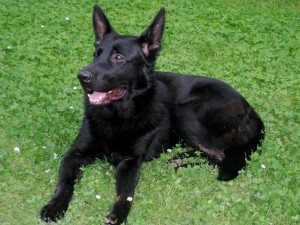 I view personal protection dogs for suburban families like handguns. Exactly where do you go that demands such a high level of defense? Why do you go there? What do you want your dog to protect, and when?
I view personal protection dogs for suburban families like handguns. Exactly where do you go that demands such a high level of defense? Why do you go there? What do you want your dog to protect, and when? 






